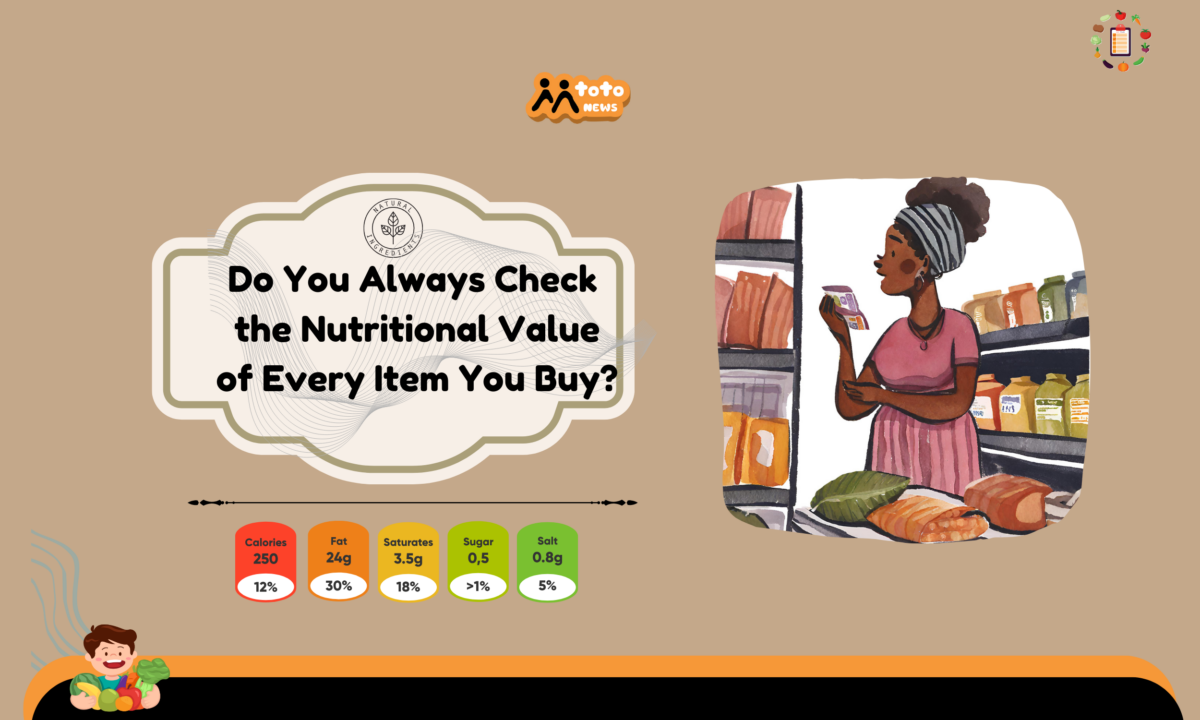I don’t think so.
As parents, one of our most important duties is to take care of the health and wellbeing of our children. Considering the rise in childhood obesity and associated health problems, it is especially important to keep an eye on the nutritional value of the food we feed them.
Checking the nutritional value of everything we purchase, particularly at supermarkets, may seem disturbing, but it’s an essential step in encouraging our children to lead healthy lifestyles.
“Samaki Mkunje Angali Bado Ni Mchanga,” as we say in Kiswahili, emphasizes that childhood is a crucial period for growth and development, both mentally and physically. Our children’s diets have a major effect on their general health, affecting everything from their level of energy to their ability to focus in class.
Regrettably, a lot of the child-friendly, pre-packaged foods that are sold to them frequently lack vital nutrients and are heavy in sugar, salt, and unhealthy fats.
By taking the time to verify the food’s nutritional value before purchasing it, we also give ourselves the power to choose what to feed our children. This involves tracking the amount of sugar, sodium, and saturated fats in addition to the calorie count. It also involves making whole, nutrient-dense foods like fruits, vegetables, lean meats, and whole grains top priority.
It’s common knowledge that maintaining a healthy diet in adulthood can be difficult, which is why many people choose comfort foods that they are accustomed to eating or put taste over nutritional value. Although they may not have much nutritional value, the concept of “grandma’s recipes” frequently wins out over nutritional considerations in favor of sentimental familiarity. After all, the mantra seems to be: if it didn’t kill us growing up, why change now?
Therefore, establishing good eating habits in our children at an early age lays the groundwork for lifelong health. We give them the skills they need to make healthy decisions on their own as they get older by teaching them to value and enjoy wholesome, nutrient-dense foods. Furthermore, we teach our children the value of nutrition and provide a good example for them to follow when we practice healthy eating habits ourselves.
Naturally, it can be difficult to discern between all of the different goods in the grocery store aisles, especially given the number of contradicting information and misleading advertising strategies used to appeal to parents as well as children. But we can gain the knowledge and abilities necessary to interpret food labels and make decisions that put our children’s well-being first with patience and practice.
While it may require extra effort and diligence, checking the nutritional value of every item we buy is a small price to pay for the long-term health and well-being of our children. By taking an active role in their nutrition, we can help them thrive and set them on the path to a lifetime of good health. After all, investing in our children’s health today ensures a brighter, healthier future for generations to come.

